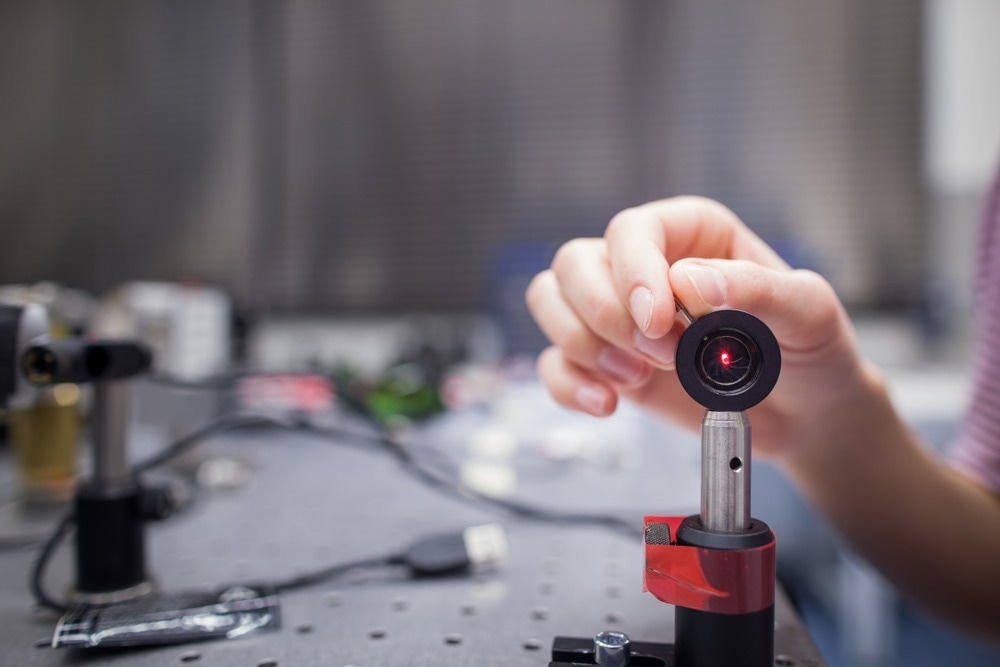Phase imaging is a crucial technique in scientific and medical fields, offering non-invasive, high-contrast visualization of transparent structures such as cells and tissues. However, conventional phase imaging methods require stable, noise-free setups to capture minute optical phase shifts. A recent study published in Science Advances has proposed a quantum-inspired noise-resistant phase imaging method to overcome this limitation, presenting new opportunities in low-light medical imaging and art conservation.

Image Credit: l i g h t p o e t/Shutterstock.com
The Phase Revolution in Optical Imaging
Optical microscopy relies on image contrast generated by a sample's light absorption or its influence on a light beam's phase. Light encountering opaque features reflects or scatters away, leaving dark shadows outlining the specimen's structural morphology.
However, many samples, like living cells and tissues, barely influence light's intensity. Instead, these phase objects alter the transmitted beam's velocity, imparting slight delays measurable through interference.
In the 1930s, Dutch physicist Frits Zernike capitalized on phase shifts through a now widely adopted technique called phase contrast microscopy. By transforming near-invisible phase variations into noticeable amplitude changes, Zernike's method enabled the imaging of transparent samples with unprecedented clarity.
Its revolutionary impact, particularly in biology and medicine, earned Zernike the 1953 Nobel Prize in Physics.
Phase imaging has since evolved into an extensive interdisciplinary field called quantitative phase imaging (QPI). Modern QPI techniques like diffraction phase and spatial light interference microscopy enable live-cell imaging, rapid diagnostics, and precision metrology applications spanning from fundamental science to industrial manufacturing.
The Noise Sensitivity Roadblock
Quantitative phase imaging relies on the interference occurring when a laser beam interacting with the sample is combined with a reference beam. This interference imprints a sample's phase profile into the detected light intensity pattern at each pixel according to:

Here, Ir and Io represent the intensities of the reference and sample light fields, respectively. Θ denotes a fixed phase difference between both that can be tuned. The crucial term is φ(x,y), which encodes the spatial phase delays introduced by the sample. Analyzing this intensity modulation by phase at each pixel enables the reconstruction of the sample's phase image.
The above equation, however, assumes stable mutual coherence between the sample and reference beams. Any fluctuations in their relative phase Θ would distort this intensity pattern, resulting in the cosine term to zero. This leaves only featureless or "washed-out" intensities with no trace of the sample's crucial phase profile:

Vibrations, air fluctuations, or small changes in the sample's relative positioning can introduce phase noise, necessitating extensive isolation of QPI systems from ambient perturbations. This severely limits the suitable operating environments and the potential applications of phase imaging.
A Quantum-Inspired Correlation Approach
Seeking to overcome this limitation, Dr. Radek Lapkiewicz and his colleagues at the University of Warsaw took inspiration from Leonard Mandel's quantum experiments from the 1960s. Mandel and his colleagues illustrated that despite the inability to detect interference in intensity, correlations could uncover its existence.
Adopting a similar concept, Lapkiewicz's team investigated how temporal intensity fluctuations between pixels may retain phase information even when noise has washed out standard interference patterns.
In their correlation measurement approach, the researchers examined pairs of pixels to observe simultaneous brightening or darkening. They found that these measurements contain additional information not attainable through a single photo, specifically intensity measurement. As a result, valuable observations could be made even when standard interferograms lose phased information and lack recorded fringes in intensity.
Lapkiewicz emphasized, "With a standard approach, one would assume that there is no useful information in such an image. However, it turns out that the information is hidden in the correlations and can be recovered by analyzing multiple independent photos of an object allowing us to obtain perfect interferograms, even though the ordinary interference is undetectable due to the noise."
The team conducted an experiment where light passing through the target phase object was combined with reference light, introducing a random phase delay to simulate a disturbance hindering standard phase imaging methods.
While intensity measurements generated no observable interference, the spatially dependent intensity-intensity correlation exhibited a fringe pattern containing complete phase object information. This correlation remains unaffected by temporal phase noise and can be measured over an extended period, offering increased accuracy with more accumulated photons.
Simply, while individual pixels showed completely random intensities like photographs taken in complete darkness, the correlations between pairs of pixels revealed the sample's phase profile amid the chaotic informational background.
Stanislaw Kurdzialek, the study's second author, highlighted that while there are various methods to recover the phase profile from a sequence of images, their approach "based on intensity-intensity correlation and a so-called off-axis holography technique provides an optimal reconstruction precision."
A Versatile New Platform
The proposed quantum-inspired noise-resistant phase imaging method is versatile, accommodating classical (laser and thermal) and quantum light sources, and effective in low light conditions, presenting new possibilities in medical imaging and art conservation.
It excels in unbalanced interferometers, providing additional degrees of freedom for multidimensional information encoding while reducing phase fluctuations. Additionally, its resistance to phase noise makes it suitable for precise and stable phase-sensitive imaging using short-wavelength sources like X-rays and matter waves, requiring strict experimental conditions for interference.
Overall, this approach enables quantitative data in extreme conditions, eliminating the need for stable environments and expanding phase imaging possibilities in fundamental and applied research.
More from AZoQuantum: Advancing Quantum Scalability with a New Qubit Method
References and Further Reading
Szuniewicz, J., Kurdziałek, S., Kundu, S., Zwolinski, W., Chrapkiewicz, R., Lahiri, M., & Lapkiewicz, R. (2023). Noise-resistant phase imaging with intensity correlation. Science Advances, 9(38), eadh5396.
University of Warsaw. (2023). Quantum Shadows: Revolutionary Method Reveals Images Hidden in Noise. [Online]. Available at: https://scitechdaily.com/quantum-shadows-revolutionary-method-reveals-images-hidden-in-noise/ Top of Form
Disclaimer: The views expressed here are those of the author expressed in their private capacity and do not necessarily represent the views of AZoM.com Limited T/A AZoNetwork the owner and operator of this website. This disclaimer forms part of the Terms and conditions of use of this website.